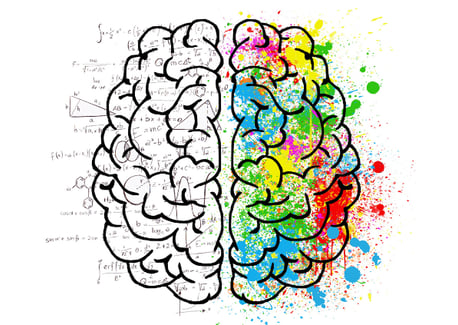Article Title: How Art Changes Your Brain: Differential Effects of Visual Art Production and Cognitive Art Evaluation on Functional Brain Connectivity
Authors: Anne Bolwerk, Jessica Mack-Andrick, Frieder R. Lang, Arnd Dorfler, Christian Maihofner.
Author Affiliations: Department of Neurology, University Hospital Erlangen, Department of Physiology and Pathophysiology, Friedrich-Alexander-University Erlangen Nurenberg, Education Department of the Museums in Nuremberg, Institute of Psychogerontology, Friedrich-Alexander University Erlangen-Nurenberg, Department of Neuroradiology, University Hospital Erlangen.
Publication: This article is an interventional study published July 1, 2014 in PLOS One, which is a peer-reviewed open access mega journal published by the Public Library of Science since 2006 and focuses on topics within medicine and science.
Study Purpose: Visual art represents a powerful resource for mental and physical well-being. However, little is known about the underlying effects at a neural level. This study's aim was to explore whether visual art production and cognitive art evaluation may have different effects on the functional interplay of the brain’s default mode network (DMN). [Note: the DMN is a neural network in the brain allowing for introspective thought without focusing on what is happening around the person. Dysregulation in the DMN is associated with mental health issues such as depression and memory processing issues such as Alzheimer’s disease.] To understand the psychological relevance of functional changes, they assessed psychological resilience, i.e. stress resistance. Psychological resilience is conceptualized as a protective personality characteristic that allows individuals to control negatives effects of stress and thus enables a successful and healthy functioning even in stressful life conditions.
Study Design: this interventional study is a randomized controlled trial, which is considered the gold standard for evaluating the efficacy of the intervention. The researchers hypothesized that participation in 10-week-long visual art groups could result in psychological changes and possibly alter the functional interplay of the DMN. Participants for the study were recruited via advertisements in local newspapers and targeted individuals who were retired and between ages 62-70. The researchers expected that post-retirement adults would be susceptible to the stabilizing effects of receiving artistic training. Professional artists and art historians were excluded from the study.
Methods: Before and after the study intervention, all participants completed a psychological examination and an fMRI measurement. The psychological examination consisted of the brief German version of the Resilience Scale (RS-11) by Wagnild &Young (1993) which is a valid and reliable instrument for measuring the individuals’ capacity of stress resistance in elderly participants. Participants rated their accordance of 11 resilience items on a 7-point Likert scale ranging from 1 (never) to 7 (always).
Participants were randomly assigned to participate in one of two groups: a visual art production group and a cognitive art evaluation group. Each group lasted two hours and occurred once a week for 10 weeks.
In the visual art production group, the participants actively created art. The concept of visual art production intervention focused on discovering and developing the participant’s own creativity. A visual artist trained as an art educator introduced different artistic methods and materials used in drawing and painting, and the participants were then able to experiment with different materials and techniques. Each participant was encouraged to produce visual art and find their own personal form of artistic expression.
In the cognitive art evaluation group, participants considered, analyzed, and interpreted selected paintings and sculptures, in dialogue with a qualified art historian. The art historian helped encourage group discussion by providing expert background information and explaining associations between the work of art and everyday experiences.
Results: For the psychological examination, the researchers found a significant improvement in psychological resilience from pre-intervention to post intervention for the visual art production group but no significant improvement in psychological resilience in the cognitive art evaluation group. Per the fMRI results, the visual art production group experienced enhanced functional connectivity of the DMN, particularly between the parietal and frontal cortices. The cognitive art evaluation group experienced no such effects.
Discussion: Based on the evidence of existing fMRI studies on neuropsychiatric disorders and chronic pain, it has been demonstrated that there are disruptions in the temporal and spatial properties of functional connectivity at rest. Additionally, the aging process seems to negatively impact the activity and connectivity of the DMN. In this study, the researchers found that producing visual art had a positive effect on psychological resilience (stress tolerance) and the DMN functionality in older adults. This was compared with a group of participants who analyzed art but did not create art of their own.
In discussing their findings, the researchers pointed out that the creation of visual art is more than just the completion of motor and cognitive tasks: it is a "personal integrative experience- an experience of 'flow,' in which the participant is fully emerged in the creative activity" (p. 6). This may help to understand the unique, positive benefits that were found with the participants who produced art, compared to the group that analyzed art and did not experience these benefits.
The researchers concluded that their findings support that the production of visual art improves effective interaction between brain regions of the DMN, improved interaction between the frontal, posterior, and temporal brain regions, and is associated with better resilience scores, which could have important implications for preventative and therapeutic intervention, especially in the aging population. Continued research is needed to understand the mechanisms that producing art has on the brain and how interventions that improve DMN function could consequently improve various neuropsychiatric disorders.
Citation: Bolwerk A, Mack-Andrick J, Lang FR, Dorfler A, Maihofner C (2014) How Art Changes Your Brain: Differential Effects of Visual Art Production and Cognitive Art Evaluation on Functional Brain Connectivity. PLOS ONE 9(7): e101035. doi:10.1371/journal.pone.0101035


